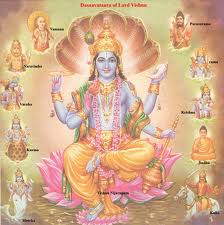| 18 Rudiments of Yoga Practice | |
The major objective of ‘Yoga’ (art of controlling the physical, mental and spiritual aspects of life) is a powerful tool provided to a person with which to align the Self with the Super Force. The pre-requisites are righteousness, truthfulness, celibacy, control of senses and emotions, devotion to the Super Force, and tendency against material possessions. Yoga Abhyas ( Practice of Yoga) commences with proper posture in a clean surrounding, seated on a piece of cloth on ground, with head and neck set straight up and concentrating motionless on the tip of one’s own nose.The posture should ideally be in a ‘Padmasana’ mode, ie. the right foot resting on left thigh and vice versa, and left hand palm pointed upwards resting on right thigh and right hand palm closing the left palm. ‘Prana Vayu’( the breath of life) has to be controlled by a finger placed on either of the nostrils, alternately exhaling and inhaling fully. The process of controlling the breath by exhaling is known as ‘Rechaka’ and by inhaling is ‘pooraka’, while the intermediate phase is known as ‘Kumbha.’ The process of controlling breathing is ‘Pranayama’, which ought to be done fast and strongly with heavy doses continously with no breaks The process of Pranayama needs to be accompanied by ‘Dhyana’ or meditation (preferably by reciting Gayatri Mantra in the three successive phase of Rechaka, Pooraka and Kumbha.) Indeed, this practice of Yoga even for a little while initially is a great achivement, and such doses of intermittent phases might happen as often as possible to make the practice a reality.The ultimate of Pranayama and Dhyana is to attain the status of ‘Samadhi’ or the complete alignment of Atman (The Inner Self) and Paramatman (The Super Soul). [Note: Sage Patanjali’s Raja Yoga defined ‘Ashtanga Yoga’ ( The Eight Limbed Yoga) viz.Yama ( The five abstention):non-violence, non-lying, non-covetousness, non-sensuality, and non- possessiveness ; Niyama (The Five Observances): Purity, contentment, austerity, study and Surrender to God; Asana ( Seated position for Meditation); Pranayama ( Lengthening of ‘Prana’, the Life Force, or Vital Energy); Pratyahara ( Abstraction) or withdrawal of sense-organs from external objects; Dharana (Meditation) : intense contemplation of the nature of Objects of meditation; and Samadhi ( Liberation or merger with the object of meditation] While the ideal achievement might fall short of human endeavour through Yoga, there are several Yoga practices, which ought to induce beneficial results to set right human limbs and lead to well-being of the Inner Self as well.] | |
 Prev:Sansrit Literature and Grammar Prev:Sansrit Literature and Grammar | |

 Next:Sansrit Literature and Grammar
Next:Sansrit Literature and Grammar